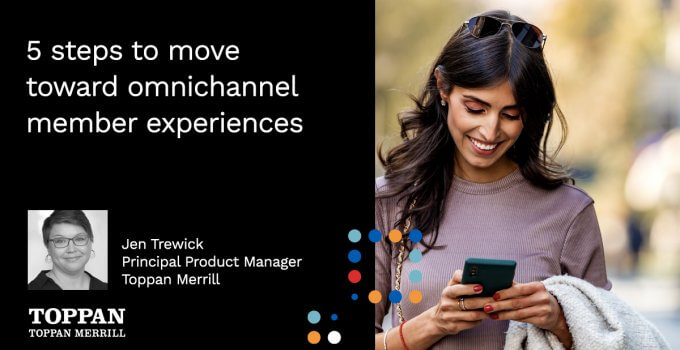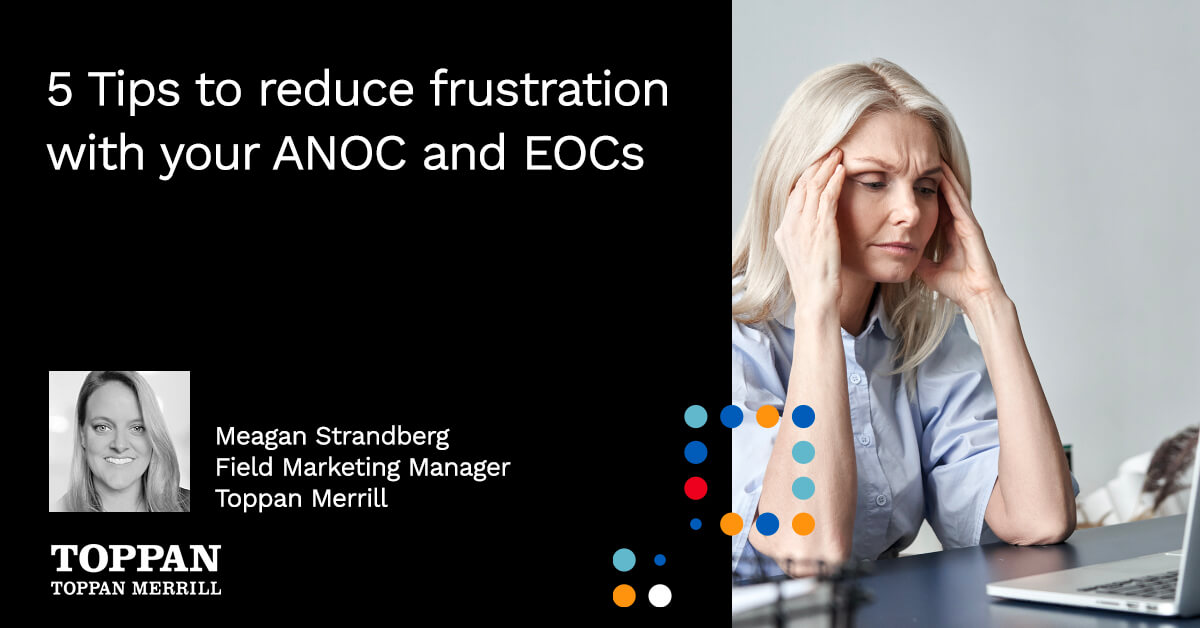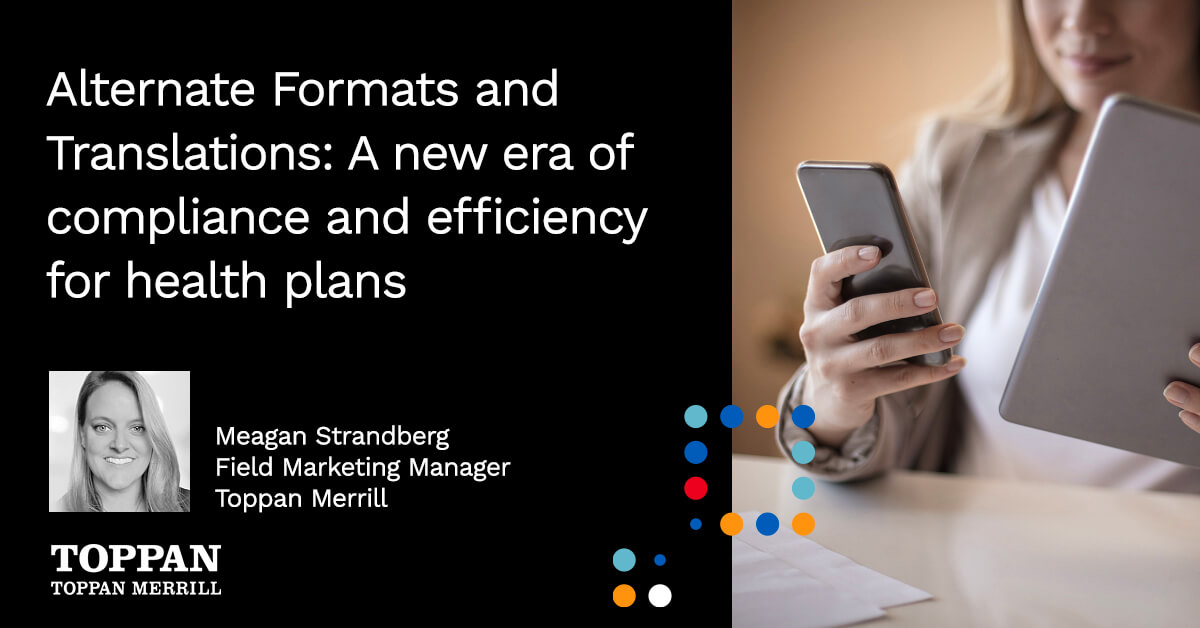A record 33 million people are now enrolled in a Medicare Advantage plan, representing more than half of the U.S.’ Medicare-eligible population. Opportunity for Medicare Advantage Organizations (MAOs) is hot on the heels of this growth and hot on the heels of intense competition for member enrollments.
Our recent blog made the point that the battle for members will largely be won or lost by what MAOs can offer in terms of member experience. Prospective members have higher expectations than ever from MAOs. Specifically, they are demanding hyper-personalized, digital-first experiences that they’ve grown accustomed to in other areas of their lives. It’s clear that in the upcoming sprint for member loyalty and competitive advantage, digital transformation will be key.
In this blog, we’re going to explore the ‘how’ of delivering a modern, omnichannel member experience that will help you retain your current membership and get the edge on new prospects.
What is an omnichannel experience?
First we need to define our terms. What exactly do we mean by an omnichannel member experience? This is a complex question, but it starts at a simple place. Essentially, omnichannel refers to increasingly offering your digitally savvy members multiple methods, or ‘channels’, through which they can engage with their care — whether that’s handling communications or managing the details of their care. In practice, this looks like having a fully functional array of member touchpoints including a Web portal, mobile app and a chat function for member service. Omnichannel experiences that are further along will probably be integrating AI for more seamless self-service options.
What we’re describing so far is not really omnichannel though — just multichannel. What elevates a member experience to become omnichannel is that all these touchpoints are integrated on your back end. In other words, no matter what channel a member uses, data from one interaction can get ported to another to enhance and personalize further interactions. Omnichannel means that these touchpoints aren’t segregated or siloed: they’re fingers of a single hand, offering members options without sacrificing seamlessness.
This is an elevated approach to digital experience, but it’s where a lot of MAOs can fall flat. For example, a member might have an excellent experience using the mobile app, but let’s say they then need to follow up with a call to member services. The agent is not able to pull up any details from the care management that the member did on the app, and, for the member, it essentially becomes a deeply frustrating experience of starting their journey from scratch.
Taking it even further, MAOs also can use the member data they have at their disposal to ensure experiences are not only consistent across channels, but also personalized. This contributes to a member’s sense that their whole experience is cohesive and tailored to their needs. For example, much like how Amazon will recommend you products based on what they know about your browsing and purchasing history, a MAO could similarly recommend events, preventive care and supplemental benefits — all based on a member’s unique health history and past engagements with their care.
Equipped with this deeper understanding of what omnichannel experiences might look like for your members, let’s now consider five steps to move closer toward them.
1. Assess your current member experience
Before getting where you want to go, you need to know where you currently stand. Take the time to detail and assess your current member experience. But, to the extent possible, try to step outside your own perspective and see your processes through the eyes of a current — or prospective — member. This critical eye will help you get a sharper look at how your channels and back-end technology infrastructure are either working for or against you in building towards the omnichannel ideal.
This member-centric perspective also will help you better answer critical questions you should be asking during your assessment phase, such as: Where are the gaps in our current processes? How can we incorporate member feedback to identify where our processes break down or need improvement?
After a thorough audit of the current member experience, you can then set objectives and prioritize your next steps. Set up your priorities in order of greatest impact on your members, and start thinking about how to work through the list.
2. Modernize your member engagement technologies
True omnichannel member experiences depend upon a modernized technology stack that prop them up. It’s more than likely many MAOs will need to invest in new technologies to add relevant channels to the mix. Remember, omnichannel revolves around being able to meet members in their preferred channels with a consistent and personalized experience. This means having a full complement of options for member engagement — not just one or two.
Following from this point, you’ll also need a modern CRM platform that can be tailored to fit all your member touchpoints. Your platform should also empower you to use analytics to extract meaningful insights from member preferences, engagement patterns and other relevant metrics to help build predictive member experiences and data-driven interventions.
On the back end, you’ll need to invest in a powerful back-end data warehouse that can pull member data from all the channels at your disposal in one place, to be stored and used securely and in compliance with HIPAA requirements.
3. Personalize your member communications and content
Equipped with a powerful set of tech solutions, you then can begin to personalize your communications and content. Use your CRM data to segment members based on demographics, health status, preferences and other data points. Once segmented, you can start to develop strategic communication and engagement strategies that are built to fit the needs of each. Supporting these strategies should be a full library of health-related content, such as preventive care reminders, medication reminders, health and wellness tips and other content that speaks directly to the needs of individual members. Once this library is built, you can start distributing it according to your personalization strategies.
4. Make sure the transition between channels is seamless
Remember that what makes the difference between mere multichannel and omnichannel is whether moving between channels is smooth or not. Protecting this seamlessness is paramount. Members need to be able to toggle between using their mobile app, web platform, to having real conversations with a member services agent — and have all their health information, preferences and engagement history move with them.
It’s not simply a matter of technology to support transitions. Staff should receive adequate training on how to recognize and use the information generated by past member interactions to improve the member service experience. And communications such as emails and letters should be drawing on that same pool of information whenever possible to reinforce the member’s sense that they’re in a longstanding and dynamic relationship with their MAO to make them feel heard and understood.
5. Commit to continuous improvement
Finally, MAOs need to understand that implementing true omnichannel experiences is an iterative process — it’s not a matter of a one-and-done intervention. Channels are always evolving, and member expectations are evolving with them. Managing omnichannel experiences therefore requires constant evaluation and re-evaluation — including finding gaps, identifying trending member feedback and other proactive measures.
Along with constantly examining the process you have in place, you also have to be continually investing in new technologies and strategies to help your member experience stay several steps ahead of expectations. The goal should be zero lag between a member’s expectations and their experience. Upholding this ‘zero-latency’ member experience is a matter of refining the existing process as well as actively introducing new structures that make your day-to-day processes even more member-friendly.
What about compliance?
Compliance anxieties are a major piece of why MAOs struggle to modernize their member experience. Omnichannel, data-driven experiences usually trigger concerns around HIPAA compliance.
Regulations around the use of protected health information (PHI) gets tighter every day. But regulatory concerns needn’t be a cause for poor member experiences. Of course, compliance and omnichannel experiences are ultimately serving the same goal from different angles: member satisfaction. Personalization should be handled delicately, and MAOs can do this by taking great care on the front end of building their omnichannel process by choosing technologies and partners that actively work in and understand the healthcare and Medicare space. Established and reputable partners will know how to harness member data in privacy-safe and HIPAA-compliant fashion.
Digital first, but not digital only
A final word of caution: while member preferences are skewing digital-first, it’s not realistic to abandon print entirely. While digital is fast becoming the preference even among older generations, there is still a sizeable pocket who will be print first, and some who will be print only.
MAOs need to strike the right balance between meeting regulatory requirements around print materials (such as the Annual Notice of Change) and making these onboarding resources conveniently accessible and on-demand through multiple digital channels.
Accelerate your organization’s digital transformation
Learning to create omnichannel member experiences is part of a larger goal for MAOs to advance digital transformation. Toppan Merrill is a proven partner in this process, having helped top organizations rethink how they relate to and engage their members. Our approach takes digital savvy far beyond a matter of good customer service — it is instead a business imperative serving differentiation in an environment of tight regulation and intense competition. Learn more about how we can help you design omnichannel experiences that help your members receive the best care.
Learn more about Toppan Merrill Health Plans Member Communications



